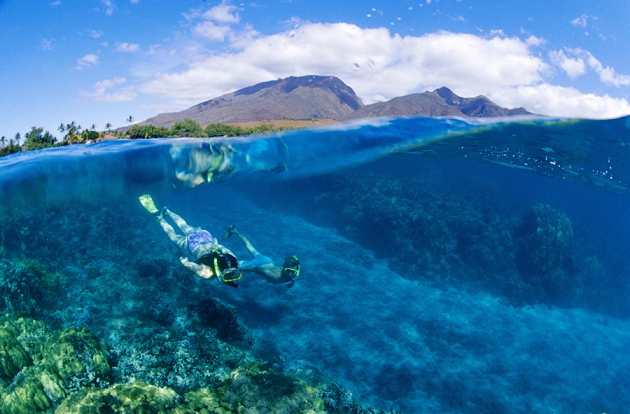Sunscreen and Coral Bleaching
"Big Blue will ONLY ALLOW the use of 100 percent biodegradable sunscreen on all of our trips."
"Non-biodegradable sunscreen IS NOT TO BE USED on Big Blue trips."
Big Blue Unlimited, tour operation, Turks & Caicos Islands
"We make it mandatory, which is easier said than done."
"The key is telling people well in advance, putting it on the website and saying this is our policy and giving them a chance to shop at home."
Mark Parrish, co-owner, Big Blue Unlimited
"This is one impact [on the environment] that we can control."
"If we are to be successful in bringing coral reefs back to a healthy state, it is incredibly important that people visiting them choose sunscreens that do not contain oxybenzone."
"More important, choosing to cover up with UV protective clothing, rash guards and hats can also reduce the amount of sunscreen needed [for sun protection]."
R. Scott Winters, chief executive officer, Coral Restoration Foundation, Tavernier, Florida
 |
|
Some scientists are concerned that certain UV-filters in sunscreens may wash off snorkellers and damage coral. Fleetham Dave/Getty Images
|
So, this is the story: most of the popular sunscreens marketed for skin protection from the sun's harmful rays work to ensure that human skin doesn't burn and that people seeking healthy-in-appearance tans for summer don't come away with that pigment-darkening effect signalling not healthy but foolish exposure. The very chemicals that stop the sun's UV effects from darkening [burning] sun worshippers' skin, do the opposite with coral reefs; they bleach them and the effect is to kill the coral; multitudes of living organisms over a calcium carbonate scaffold.
A 2008 European study published in Environmental Health Perspectives reached the conclusion that sunscreen is responsible for the promotion of viral infections in corals leading to bleaching. An estimate of over 12,000 metric tons of sunscreen is deposited annually in the world's oceans. And here you were thinking, what on Earth? How can the small smudges of sunscreen you smooth over your sun-exposed epidermis possibly pose a threat to aquatic life? Yours and everyone else's does just that, it would seem.
According to Craig Downs, executive director of the Haereticus Environmental Laboratory in Clifford, Virginia the chemicals representing the active ingredients in protecting skin from the damage known to be caused by ultra violet rays wash off as people swim in the ocean; alternately wash away in the shower, and represent an environmental threat "bigger than climate change" in damage caused to coral reefs. Studies have verified those links with the active ingredients and coral bleaching with the result that a global demand has arisen for the production of reef-safe sunscreens.
 |
| Many different factors affect coral bleaching. The Ocean Agency/XL Catlin Seaview Survey |
Mr. Downs himself headed a research team in 2015 whose report that oxybenzone, a common chemical used in sunscreens, is toxic to the symbiotic algae that thrive within corals, giving them their distinctive colour, as well as performing other vital services to the coral; disrupting the process with chemicals in sun screen results in stuned growth of corals. As a result of the growing awareness of the damage caused by this chemical, lawmakers in Hawaii are working on banning oxybenzone-containing sunscreens.
Although sunscreen in and of itself certainly doesn't represent the only harmful effect on coral bleaching, where rising sea temperatures resulting from global warming is considered to be the greatest threat to the survival of corals, a campaign has been undertaken by environmental advocates and the travel industry to educate the public and persuade them that their awareness and resulting reaction in setting aside the use of oxybenzone-containing sunscreens can have a positive impact.
 |
Corals are bleached on a seabed near Okinawa island on Aug. 26, 2013.
The Yomiuri Shimbun—AP
|
Labels: Aquaculture, Bioscience, Research

0 Comments:
Post a Comment
<< Home